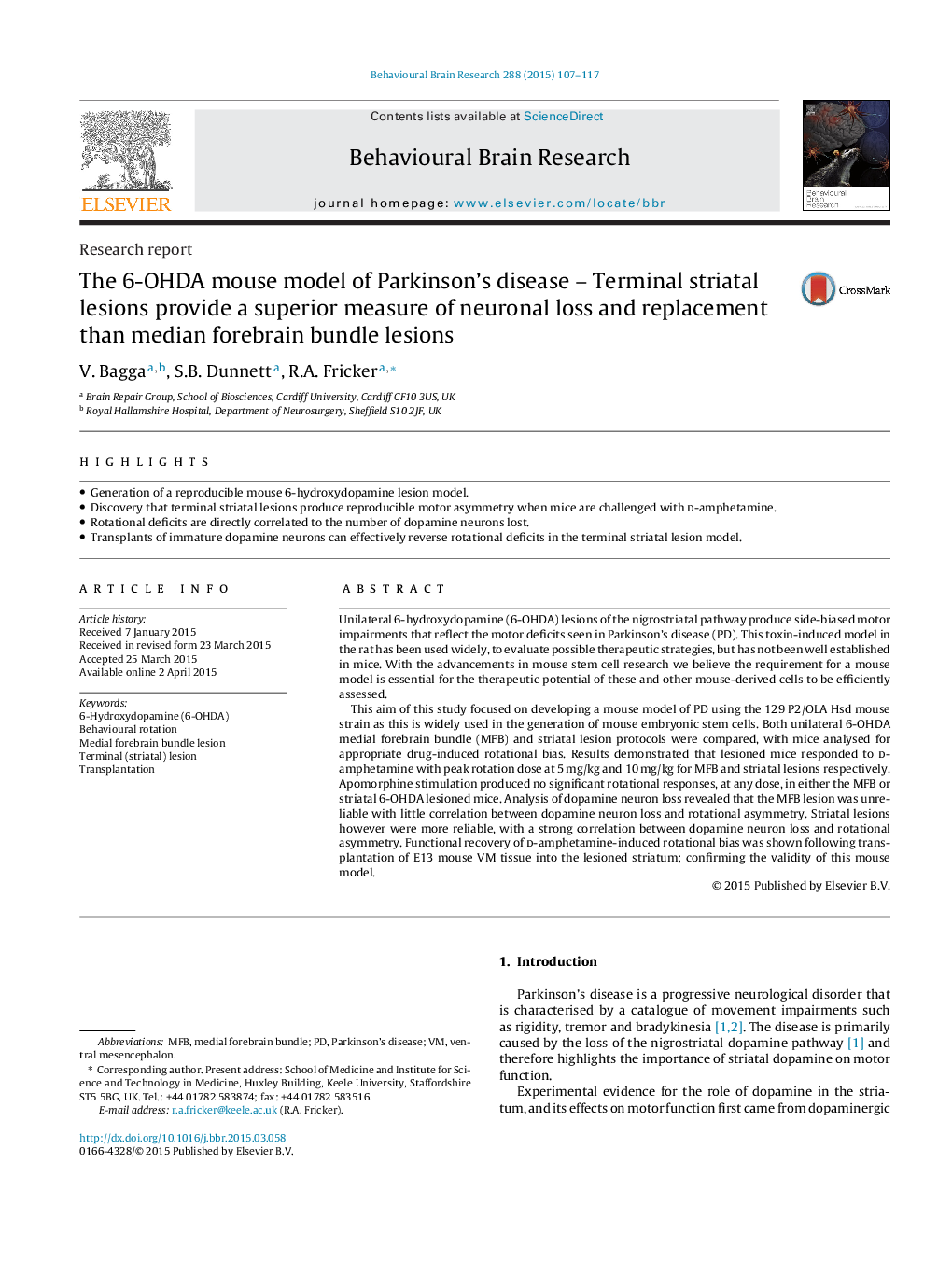| Article ID | Journal | Published Year | Pages | File Type |
|---|---|---|---|---|
| 6256706 | Behavioural Brain Research | 2015 | 11 Pages |
â¢Generation of a reproducible mouse 6-hydroxydopamine lesion model.â¢Discovery that terminal striatal lesions produce reproducible motor asymmetry when mice are challenged with d-amphetamine.â¢Rotational deficits are directly correlated to the number of dopamine neurons lost.â¢Transplants of immature dopamine neurons can effectively reverse rotational deficits in the terminal striatal lesion model.
Unilateral 6-hydroxydopamine (6-OHDA) lesions of the nigrostriatal pathway produce side-biased motor impairments that reflect the motor deficits seen in Parkinson's disease (PD). This toxin-induced model in the rat has been used widely, to evaluate possible therapeutic strategies, but has not been well established in mice. With the advancements in mouse stem cell research we believe the requirement for a mouse model is essential for the therapeutic potential of these and other mouse-derived cells to be efficiently assessed.This aim of this study focused on developing a mouse model of PD using the 129 P2/OLA Hsd mouse strain as this is widely used in the generation of mouse embryonic stem cells. Both unilateral 6-OHDA medial forebrain bundle (MFB) and striatal lesion protocols were compared, with mice analysed for appropriate drug-induced rotational bias. Results demonstrated that lesioned mice responded to d-amphetamine with peak rotation dose at 5Â mg/kg and 10Â mg/kg for MFB and striatal lesions respectively. Apomorphine stimulation produced no significant rotational responses, at any dose, in either the MFB or striatal 6-OHDA lesioned mice. Analysis of dopamine neuron loss revealed that the MFB lesion was unreliable with little correlation between dopamine neuron loss and rotational asymmetry. Striatal lesions however were more reliable, with a strong correlation between dopamine neuron loss and rotational asymmetry. Functional recovery of d-amphetamine-induced rotational bias was shown following transplantation of E13 mouse VM tissue into the lesioned striatum; confirming the validity of this mouse model.
